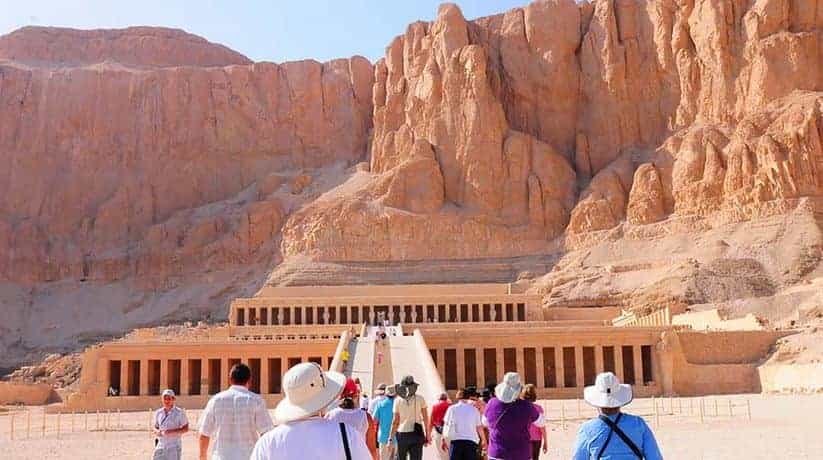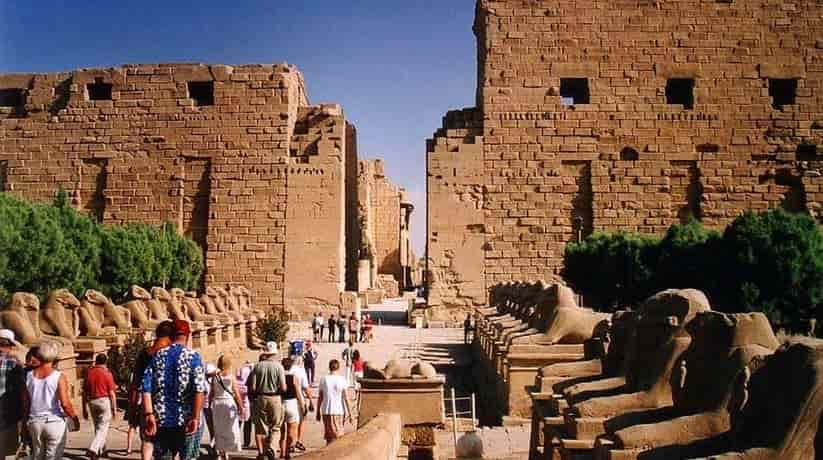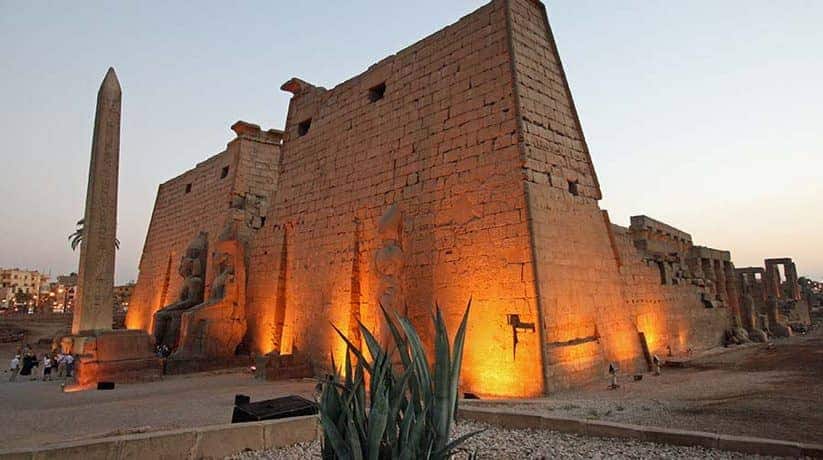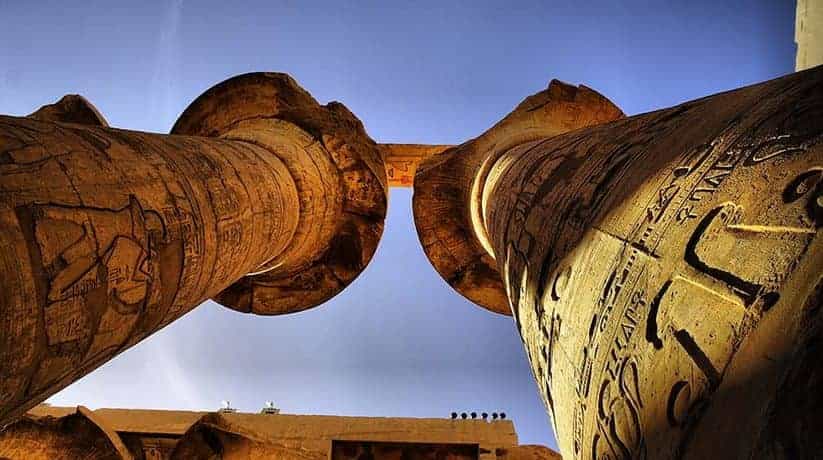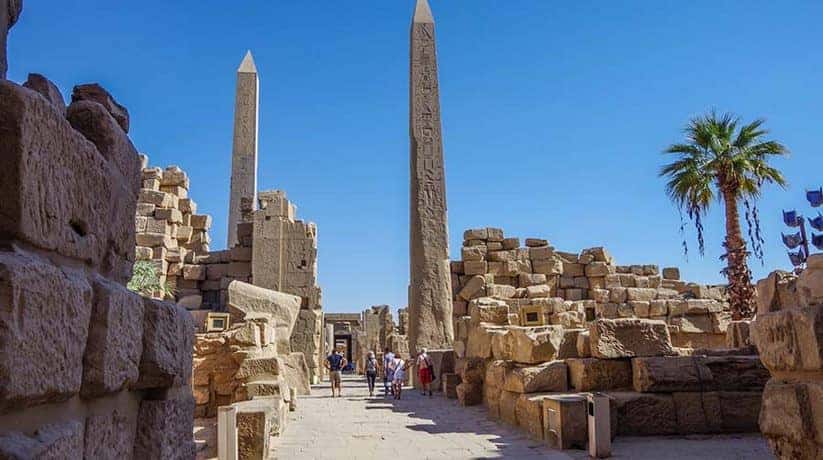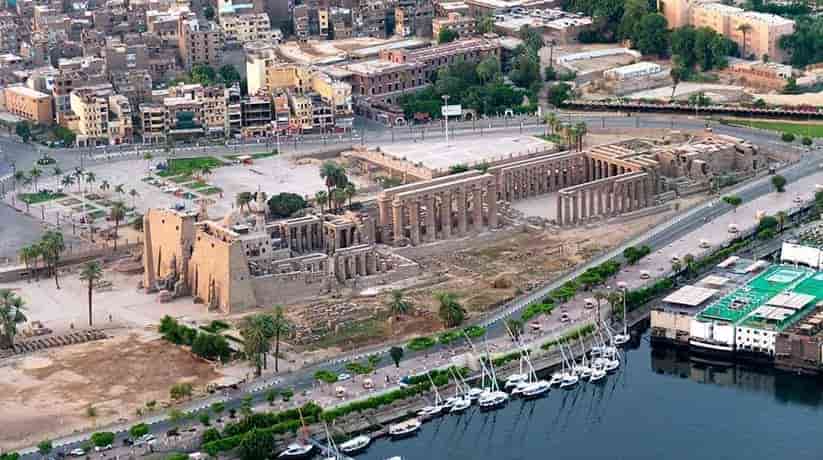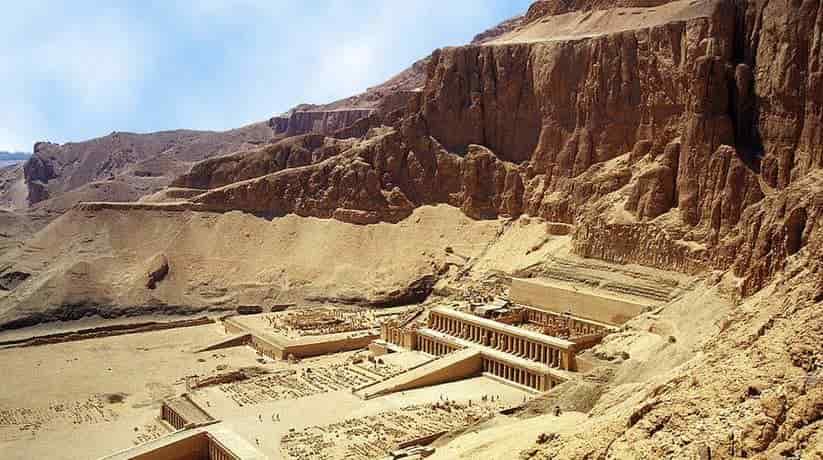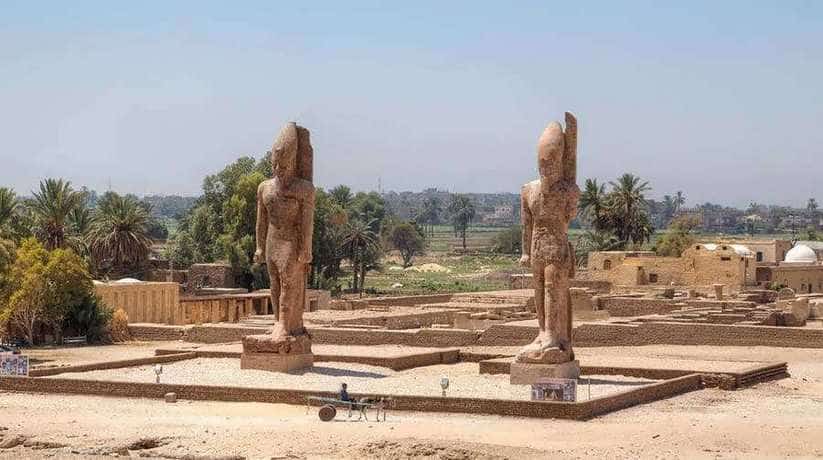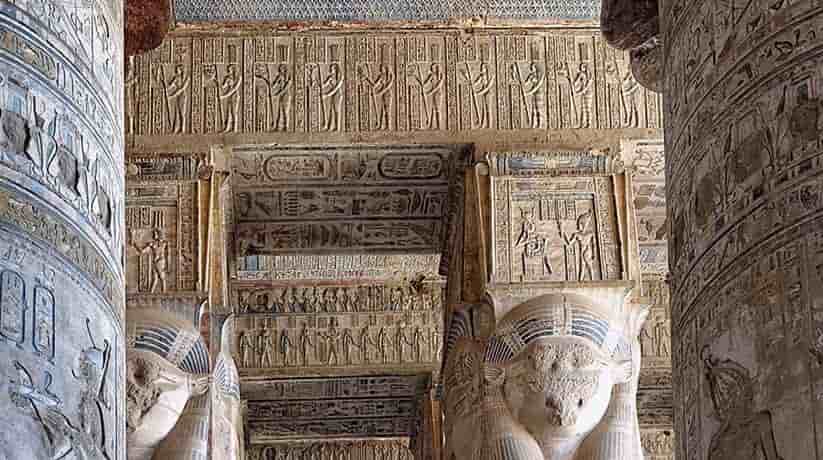Luxor temples Egypt tours, prices, booking, reviews
Luxor temples include Amenhotep III temple which was the largest temple which built on the West Bank. It covered an area of 35 hectares and one of the largest religious structures in Egypt. At the time of construction in Dynasty XVIII, it would have superseded the temple of Amun at Karnak in size. Kom El Hetan is the modern name for Amenhotep’s temple. It located about half a kilometer to the south east of Medinet Habu. In fact, it stretches from the Colossi of Memnon back to the bend by the Antiquities Inspectorate. The temple decayed rapidly. It is possibly due to the water content of the land it built on.
Luxor temples also include Dendera temple which located about 60 kilometers north of Luxor. It is on the west bank of the Nile River and opposite the provincial modern. Along with Dendera temple itself, there is also a necropolis. The necropolis includes tombs of the Early Dynastic Period. The most important phase that has identified was the end of the Old Kingdom. It is besides to the 1st Intermediate Period. In fact, the provinces were autonomous at that time and. Dendera was not a leading political force in Upper Egypt. Its notables built many Mastabas of some size. Though only one has any decoration apart from stelae and false doors. Moreover, on the west end of the temple site are brick which vaulted catacombs.
Further details about Luxor temples Egypt:
Luxor temples also include Hatshepsut temple. The temple built just north of the Middle Kingdom temple of Mentuhotep. In fact, it is in the bay of cliffs which known as Deir El Bahri. In ancient times, the temple called Djeser-djeseru, meaning the “sacred of sacred”. It influenced by the style of the earlier temple at Deir El Bahri. Hatshepsut’s construction surpassed anything which built before. It is both in its architecture and its beautiful carved reliefs. Moreover, the female pharaoh chose to site her temple in a valley sacred to the Theban Goddess of the West. It was on a direct axis with Karnak temple of Amun on the east bank. On the other side of the mountain was the tomb which Hatshepsut constructed for herself. In fact, the tomb located in the Valley of the Kings (KV 20).
Luxor temples also include Karnak temple in East bank of Luxor. The temple indeed is one of the greatest temples all over Egypt. Thebes was the capital of New Kingdom Egypt. In fact, the temple grown in importance throughout the Middle Kingdom, when it was a sanctuary of the god, Montu. Moreover, Karnak temple and Luxor temple together known as Waset. Thebes was the later Greek name for the town. The history of the temple and its gods told in three performances. They are in different languages each evening in a spectacular Sound and Light Show. In fact, the temple has the biggest temple complex in the world.
More details about the site:
Luxor temples also include Khnum temple which located at Esna town, 55 kilometer south of Luxor. That is why it called Esna temple. Nile cruises often make this town their first port of call after leaving Luxor. It is to visit the remains of Ptolemaic temple in the center of the town. In fact, the ancient name for Esna was Iunyn or Ta-Senet, classical Latopolis. The temple dates back to the Ptolemaic and Roman Period and one of the last temples built in Egypt. Moreover, it stands today in its excavation pit, 9 m below the modern ground level. The temple Luxor dedicated to the god Khnum. It also dedicated to several other deities including Neith, Heka, Satet and Menheyet.
Luxor temples also include Luxor temple which located in the center of Luxor city. In fact, the temple known as “Ipet-resyt” or “the southern Opet”. Moreover, it served as a focal point for the Opet festival. Once a year the divine image of Amun with his consort Mut and their son Khonsu would journey. The journey was in their sacred barques from Karnak Temple to Luxor temple. It was to celebrate the festival which held during the inundation. Opet’s primary function was religious. But the festival was also significant in maintaining the king’s divine role. The earliest remains found at the temple date back to Dynasty XIII. It is possible that there was a shrine or temple on this site. It was during the Middle Kingdom, but it became more prominent in Dynasty XVIII.
Further details about the site:
Luxor temples also include Mentuhotep II temple which is a mortuary temple. It located in the West Bank of Luxor, just next to Hatshepsut temple at Deir El Bahari. The temple had important historical overtures. So it is not surprising that various teams have investigated the site. It was the first temple in Western Thebes to house a cult to the goddess Hathor. Moreover, it foreshadowed a new theological concept of the “Temples of Millions of Years”. It is which would gain popularity during the New Kingdom. Lord Dufferin is the one who discovered the temple. It was in the later half of the 19th century. Henri Edouard and Henry Hall are the first modern scholars to examine the site between 1903 and 1907. They supported by the Egypt Exploration Fund.
Luxor temples also include the Ramesseum which is a funerary temple of Ramses II 1279–13 BC. It erected on the west bank of the Nile River at Thebes in Upper Egypt. In fact, The temple is famous for its 17 meter seated statue of Ramses II. Moreover, it dedicated to the god Amon and the deceased king. The walls of the temple, only about half preserved. Furthermore, they decorated with reliefs including scenes depicting Kadesh Battle and the Festival of Min. Kadesh is the Syrian wars. The temple identified with the “Tomb of Ozymandias”. The temple located in the Theban Necropolis. It is indeed a popular area for mortuary temples for Pharaohs in the New Kingdom. In fact, the Theban Necropolis located in Upper Egypt. Moreover, it stands across the Nile from the modern day city of Luxor.
More details about Luxor temples Egypt:
Luxor temples also include Seti I temple which indeed is the most northerly of the Theban temples. It situated just past the road to the Valley of the Kings, towards the village of El Tarif. The present entrance of Satis temple is through a gate in the northern wall. In fact, the temple begun by Seti I who named it “Glorious Seti in the West of Thebes”. The temple dedicated it to Amun-Re and the cult of the deified Ramses I. After Seti’s death, the building and decoration completed by his son Ramses II. Same like many of the West Bank Temples, it saw a great deal of re-use after the New Kingdom. The first is during the Roman Period when it seems to have been an area. It is where artisans worked. Later during the Coptic era when parts of the temple converted to a church and dwellings.

